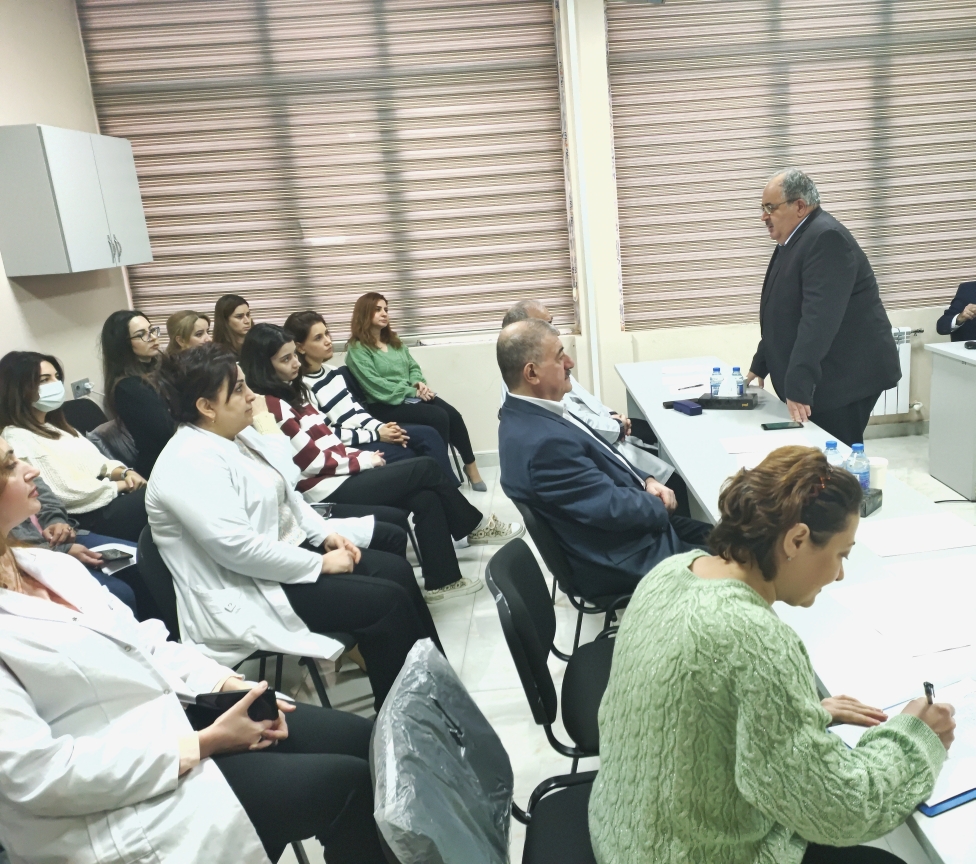
A meeting dedicated to the annual report of the Institute of Biophysics under the Ministry of Education and the Scientific Council of the Institute was held.
The leadership of the institute, members of the Scientific Council, and relevant laboratory and department staff attended the meeting.
Opening the meeting with a welcoming speech, the Director-General of the Institute of Biophysics, Oktay Qasimov, who is also a corresponding member of the Azerbaijan National Academy of Sciences, greeted the participants and handed over the floor to the Executive Director, Ph.D. Karim Qasimov, to present the report.
In his presentation, K. Qasimov provided detailed information on the tasks related to the implementation of the decrees and resolutions of the President of the Republic of Azerbaijan, the Cabinet of Ministers, the Ministry of Education and Science, and the Azerbaijan National Academy of Sciences, as well as other assignments during the current year.
He reported that in 2023, the institute conducted scientific research in the field of "Biophysical Principles of Biological Systems," covering 1 problem, 2 topics, and 5 works. During the current year, the institute's researchers published 19 articles (7 of which in international journals indexed in the "Web of Science" and "Scopus" databases), 11 theses (2 of which internationally), and the 7th chapter of the book "Selenium and Human Health" was published. The institute's publications received 242 citations in 2023. Collaborative research activities were successfully carried out with colleagues from Turkey, the United States, Italy, Pakistan, Sweden, Belarus, and France, resulting in international-level research.
The institute presented three important results during the reporting year (detailed information is provided below). Highlighting the significant outcomes, the scientist noted that collaborative research between the Institute of Biophysics and scientists from the National Oncology Center of Azerbaijan resulted in a valuable tool for selecting an effective strategy for personalized chemotherapy in cancer patients using the distribution of TEMPO spin probes in cancer cells (utilizing hyperthermia and/or gelation). This important result was published in the journal Acta Naturae with an impact factor of 2.202.
The second major result, presented by the speaker, involved collaborative research between the Institute of Biophysics and researchers from Montpellier University in France, where statistically significant correlations were found in the localization of exposed aggregation-prone regions (EARs) in subunits of various organisms. This result was published in the journal "Briefings in Bioinformatics" with an impact factor of 13.994.
K. Qasimov also emphasized the third major result, which pertains to the selective nature of the diagnostic and treatment pathway for colorectal cancer based on collaborative research between the Institute of Biophysics, the Institute of Genetic Resources, Azerbaijan Medical University, and Heidelberg University in Germany. This result was published in the journal "Biomedicines" with an impact factor of 4.757.
The speaker also highlighted the efforts of the institute in training highly qualified scientific personnel, disseminating scientific knowledge among students, and attracting talented young people to the field of science. The institute's scientists actively participated in conferences, seminars, and other events, as well as engaged in scientific-popular activities through mass media.
In the end, the President of the Young Scientists and Specialists Council of the institute, researcher Matanat Bakhishova, provided comprehensive information on the annual report of the Young Scientists and Specialists Council for the year 2023. She reported that the year was successful for the institute's young scientists, who actively participated in various conferences, events, and science festivals.
After the presentations, discussions were held, and a vote was taken, with unanimous approval from the members of the Scientific Council.